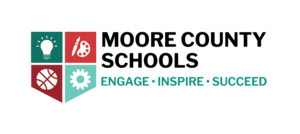Description
- Overview:
- Students will create a fictitious city that has experienced a natural disaster. Once their city is completed, students will create a vehicle to transport supplies to the people who need help.
- Subject:
- Science
- Level:
- Upper Primary
- Grades:
- Grade 4
- Material Type:
- Activity/Lab
- Author:
- William Allred, Carrie Robledo
- Date Added:
- 04/30/2020
- License:
-
Creative Commons Attribution

- Language:
- English
Comments
Standards
Learning Domain: Earth History
Standard: Give examples of how the surface of the earth changes due to slow processes such as erosion and weathering, and rapid processes such as landslides, volcanic eruptions, and earthquakes.
Degree of Alignment: Not Rated (0 users)
Learning Domain: 1. Computing Systems
Standard: Evaluate the features available on digital devices to perform a variety of classroom tasks.
Degree of Alignment: Not Rated (0 users)
Learning Domain: 1. Computing Systems
Standard: Model how computer hardware and software work together as a system to accomplish tasks.
Degree of Alignment: Not Rated (0 users)
Learning Domain: 1. Computing Systems
Standard: Determine potential solutions to solve simple hardware and software problems using common troubleshooting strategies
Degree of Alignment: Not Rated (0 users)
Learning Domain: 2. Networks & The Internet
Standard: Model how information is broken down into smaller pieces, transmitted as packets through multiple devices over networks and the Internet, and reassembled at the destination.
Degree of Alignment: Not Rated (0 users)
Learning Domain: 2. Networks & The Internet
Standard: Explain your digital footprint and how personal information can be protected.
Degree of Alignment: Not Rated (0 users)
Learning Domain: 1. Computing Systems
Standard: Choose appropriate devices to perform a variety of classroom tasks.
Degree of Alignment: Not Rated (0 users)
Learning Domain: 1. Computing Systems
Standard: Describe the function of common physical components of computing systems (hardware) with appropriate terminology.
Degree of Alignment: Not Rated (0 users)
Learning Domain: 1. Computing Systems
Standard: Operate appropriate software to perform a variety of tasks.
Degree of Alignment: Not Rated (0 users)
Learning Domain: 1. Computing Systems
Standard: Describe basic hardware and software problems with accurate terminology.
Degree of Alignment: Not Rated (0 users)
Learning Domain: 2. Networks & The Internet
Standard: Illustrate how information is broken down into smaller pieces and can be reassembled.
Degree of Alignment: Not Rated (0 users)
Learning Domain: 2. Networks & The Internet
Standard: Apply knowledge of what passwords are and why we use strong passwords to protect devices and information from unauthorized access.
Degree of Alignment: Not Rated (0 users)
Learning Domain: 2. Networks & The Internet
Standard: Discover your digital footprint and how personal information can be protected.
Degree of Alignment: Not Rated (0 users)
Learning Domain: Computational Thinker
Standard: Students develop and employ strategies for understanding and solving problems in ways that leverage the power of technological methods to develop and test solutions.
Degree of Alignment: Not Rated (0 users)
Learning Domain: Computational Thinker
Standard: Students formulate problem definitions suited for technology-assisted methods such as data analysis, abstract models and algorithmic thinking in exploring and finding solutions.
Degree of Alignment: Not Rated (0 users)
Learning Domain: Computational Thinker
Standard: Students collect data or identify relevant data sets, use digital tools to analyze them, and represent data in various ways to facilitate problem-solving and decision-making.
Degree of Alignment: Not Rated (0 users)
Learning Domain: Computational Thinker
Standard: Students break problems into component parts, extract key information, and develop descriptive models to understand complex systems or facilitate problem-solving.
Degree of Alignment: Not Rated (0 users)
Learning Domain: Computational Thinker
Standard: Students understand how automation works and use algorithmic thinking to develop a sequence of steps to create and test automated solutions.
Degree of Alignment: Not Rated (0 users)
Learning Domain: 1.5. Computational Thinker
Standard: Students develop and employ strategies for understanding and solving problems in ways that leverage the power of technological methods to develop and test solutions.
Degree of Alignment: Not Rated (0 users)
Learning Domain: 1.5. Computational Thinker
Standard: Students formulate problem definitions suited for technologyassisted methods such as data analysis, abstract models and algorithmic thinking in exploring and finding solutions.
Degree of Alignment: Not Rated (0 users)
Learning Domain: 1.5. Computational Thinker
Standard: Students collect data or identify relevant data sets, use digital tools to analyze them, and represent data in various ways to facilitate problem-solving and decision-making.
Degree of Alignment: Not Rated (0 users)
Learning Domain: 1.5. Computational Thinker
Standard: Students break problems into component parts, extract key information, and develop descriptive models to understand complex systems or facilitate problem-solving.
Degree of Alignment: Not Rated (0 users)
Learning Domain: 1.5. Computational Thinker
Standard: Students understand how automation works and use algorithmic thinking to develop a sequence of steps to create and test automated solutions.
Degree of Alignment: Not Rated (0 users)
Evaluations
No evaluations yet.


Emphasize correct choice of device to align with K2.CS.01 and 35.CS.01
Emphasize function of hardware components to align with K2.CS.02 and 35.CS.02
Emphasize correct choice of software to align with K2.CS.03
If you added information about how the transfer of supplies is similar to the transfer of information across networks (total information broken down into smaller parts and then brought back together at the end location) this lesson could be tied to 35.NI.01 computer science standard).